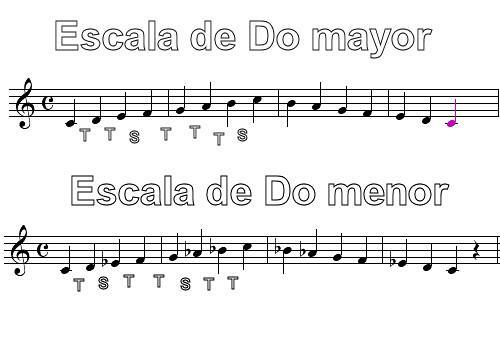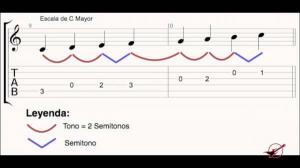Main DIFFERENCES between MAJOR and MINOR scale

Music is something we enjoy practically every day and many times we just listen to it. However, when we begin to investigate and try to get closer to learning how to create music or simply understand it better, we come across various concepts that we must understand.
In this lesson from a TEACHER we will learn about differences betweenmajor and minor scale, two of the scales that are most frequently used in music of any genre.
Before you start learning about the differences between a major and a minor scale, it is extremely important that you have other basic musical concepts before you begin. This will help you to be more clear about the differences not only between these two scales but between many others in the future. These terms are: musical scale and interval.
What is a musical scale?
The musical scale it refers to a staircase and, as such, it has a certain number of “steps or steps”. When we speak in the musical context, a scale has musical notes instead of steps. When several notes are placed one after the other both ascending and descending in pitch, this is what we call
musical scale. Another very important thing is that between note and note there is a certain space and that brings us to the next key concept: the interval.What is a musical interval?
As we mentioned, the musical intervalIt is the distance between one note and another, with distance we refer to tuning. The measure used in music to measure intervals is the tone and semitone.To see it easier you can refer to a piano, since it will be easier for you to see it. 1 tone is the distance between each 2 keys (taking into account both the white and black keys).
Another way of looking at it is that if between two white keys there is a quarter note, this means that between those two notes there is 1 tone. In the opposite case, if there are no black keys between two white keys, as is the case between the notes E and F, that means that the distance is a semitone. A semitone is not more than ½ tone, so the distance between one key and another, taking both the white and black keys, is always a semitone.

Image: Theory
In general, you should know that the difference between all the scales is the distance between each of their notes and the sequence that is formed with them when the scale cycle is completed. By scale cycle we mean reaching the octave interval, which is when the note names begin to repeat. (do, re, mi, fa, sol, la, si y do again).
Another way to identify the scales is by recognizing the characteristic notes, since in each one there is one or a pair of specific intervals that differentiate them from the others.
The Major Scale
The Major Scale has 7 notes. If we write down the intervals between each note until reaching the octave, we obtain the following sequence: 1 tone, 1 tone, 1 semitone, 1 tone, 1 tone, 1 tone, 1 semitone.
To make this system easier to see, with numbers we get a formula:
1 – 1 – ½ – 1 – 1 – 1 – ½.
Regardless of what musical note we start a musical scale on (the note we call the fundamental), if this formula is maintained, we will obtain a larger scale.
The characteristic interval notes of the major scale are the major third (2 ascending tones from the note fundamental), the major sixth (4 ½ steps ascending), and the major seventh (one semitone descending from the fundamental).
Minor scale
It is important that you know that there are different main types of minor scale: natural minor and harmonic minor. Both are characterized by the fact that they carry the interval of the minor third (1 ½ ascending from the fundamental). As for the difference, this is in the interval of the sixth, since the natural minor scale carries the minor sixth (4 ascending tones) and the harmonic minor carries the augmented sixth (5 tones ascending).
In interval formulas these look like this:
- Natural Minor Scale: 1 - ½ - 1 - 1 - 1 - ½ - 1
- Harmonic Minor Scale: 1 - ½ - 1 - 1 - 1 - 1 - ½

Image: Flickr
- The main difference between these scales is that the major scale has the major third interval, while the minor scale has the minor third interval.
- Finally we can notice this in the sound, since the third major gives us a feeling of joy and brilliance, while the third minor and the sixth minor produce a gloomy and / or mysterious sensation.
If you want to better understand this article about differences between the major and minor scale, we recommend that you sit down to play it on a piano so that you can visualize and listen to it and thus understand it more easily.



